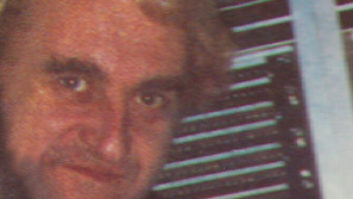I cringe every time someone mentions that some improvement to digital audio technology will finally make it sound more like analog. To them I say, “Which analog are you talking about?”
Veteran engineers know better, but every day, novices join our profession, many experiencing only hearsay about analog’s glorious past. Or worse, misinformed clients request specific gear as if any one product will make them sound better. Great-sounding records and CDs coexist with proof of skill. We’re human. With each mistake, there’s an opportunity to learn and hopefully get another shot to do better. Our equipment is “human” too, and should not bear the primary blame for sonic imperfection. That’s too easy.
BIRTH OF BITS
The digital revolution changed our lives in the early ’80s. Prior to that, audio pros had an edge over most consumers. In the control room, our tape machines were being checked and calibrated daily. At home, most record players and cassette decks were tolerated for wide variations in speed, frequency response and distortion — a moving target at best.
Since the CD, the differences between master and “copy” have diminished, along with our edge over consumer formats and perhaps our sense of humor as well. Because of what I like to call the “sonic airbag protection” of analog tape and the phonograph record, we got into a few bad habits, always struggling for a little more clarity, boosting treble here and there with wild abandon.
These bad habits made the transition to digital more painful than necessary, yet we owe the “ones and zeroes” technology a debt of gratitude for increasing our awareness about all things analog, real or imagined. Boutique audio manufacturers too numerous to mention exist, survive and are responsible, not just for keeping vintage technology alive, but for the continued evolution of both vacuum tube and semiconductor technology. We are smarter and more informed now. All-digital projects are sounding better, with no excuses.
As the chronometer advanced from 1999 to 2000, the air was electric with expectation. The world still turns in the same direction, and I only wish for 1% of the money lost on Internet startups. In the meantime, a quiet revolution was brewing somewhere between the 16th and 24th bit. Professionals have finally regained the edge with a choice of bandwidth and bit depth options — some more than exceeding the capabilities of analog tape — while being relatively affordable. For the average consumer, the ability to deliver more samples and bits is almost inconsequential. With the exception of a few who really know the difference, MP3 files, audio cassettes and VHS tapes seem acceptable.
DIGITAL STEAK = HAMBURGER
Digital has been deconstructed and criticized ad nauseum. It’s only fair to turn the table to see which of analog’s deficiencies contribute to its greatness. The primary difference between digital and analog is that, when pushed to the limits, analog distortion is harmonically related to the program, and digital’s artifacts are not.
It’s easy to view digital audio as a picture turned into the puzzle. Once cut, the pieces never become completely whole, or at least that’s one of the “puzzles” our mind has had difficulty reassembling. More bits and more samples make the pieces smaller than eye and ear can perceive. In some cases, more resolution than necessary, yet a comforting degree of psychological assurance sometimes goes a long way. For professionals, choices are good.
A friend once gave me a gift subscription to an audiophile magazine. In one issue, an all-digital recording project was released in both CD and vinyl versions. The reviewer preferred the vinyl. On the surface, that’s fine. Having serviced disc-cutting equipment — as well as having a romantic attachment to both recorders and reproducers — I was equally aware of the limitations. I wondered which of the idiosyncrasies — known or not — the reviewer preferred. None were acknowledged.
The dialog consisted of all the usual intangibles that seemed more seance than science. Had the reviewer put a test record on the turntable to check frequency response alone, I would have been satisfied that the comparison correlated with something based upon fact. Records may be ancient history, but their electromechanical complexity helps make all analog devices more tangible.
CUTTING THE GROOVE
The disc recorder begins with a “cutter head,” basically two small motors — just like a pair of headphone drivers — coupled to a cutting stylus. As such, they are subject to all the idiosyncrasies of induction, including electromechanical resonance, coil and magnet saturation. Hot levels overheat the “voice” coil, increasing resistance and reducing efficiency.
The Record equalization curve boosts treble and cuts bottom, and Playback EQ inverts the curve to return the spectral balance to normal. The same concept is applied to analog tape to improve signal to noise. Boosting treble in Record reduces headroom. Excessive levels increase the chances of high-frequency saturation. This can be considered “peak limiting,” if you don’t go overboard. It’s no wonder so many people were dissatisfied with digital at first — no airbag equals “big ear boo-boo.”
INWARD SPIRAL
Novices may be surprised to discover that a phonograph record’s frequency response is “flat” only at the outside. Disc speed is constant. But as the grooves spiral toward the center, more high frequencies are crammed into a smaller space, making that groovy road more difficult to travel with each revolution. Contrast this with a CD, which “starts” at the center, with the rotational speed decreasing as the laser spirals to the outer circumference. Speed is determined by clocking information, embedded in the data, so signal readability is constant.
The analog-cutting stylus is a very precise “chisel” capable of putting more wiggles into the groove than some playback stylii can trace, for bass as well as treble, the latter exaggerated by the EQ boost during record. Several stylus shapes, the most common being elliptical, improve tracking. Still, as inner grooves become more difficult to accurately trace, high-frequency response is reduced while distortion increases. Tracking accuracy is subject to the mechanical optimization of every component within the cartridge and arm, starting at the tip of the stylus all the way to the type of wire used at the back-of-the-arm pivot points.
Built into Neumann cutting amplifiers is an “acceleration limiter” to protect the cutter head as well as make the groove more manageable. (Helium trickles into the head coils to prevent overheating during loud, bright passages. Be sure to ask your mastering engineer to demonstrate the cooling effect of this gas on vocal cords.)
While the opportunity is increasingly rare, observing the meters of a cutting amplifier will increase awareness of the high-frequency energy generated by an “S,” an F,” a snare or tambourine. A high-frequency limiter is not only essential for protecting the head, but it is also part of the “sound of vinyl.” Keep in mind that recovering two channels from one groove does not yield 100% separation, also known as “crosstalk,” which can range from 15 dB to 35 dB, representing the transition from high to low frequencies, respectively. Crosstalk creates phase-localization information that tricks the ear into feeling more immersed into a 3-D space, particularly with recordings made using modern — not better — multi-miked/pan-potted, “stereo” production techniques.
BACK TO THIS CENTURY
Having explored two of the more obvious idiosyncrasies responsible for the “sonic airbag” and “spatial enhancement” qualities associated with analog disc recorders, we now return to the present. The most advanced digital recording technology will not sound like analog disc or tape. It should be neutral and accurate. Any “desirable color or de-constructive artifacts” — aka distortions — must come from either vintage-style analog hardware or digital emulation.
Regarding software for workstations, it should be noted that Native-based products are facing their biggest challenge since Napster made music available for free. Copy protection schemes for software runs the gamut, but most can be cracked because of the common platform — PCs and Macs alike. The primary method of circumvention is dedicated hardware. The new hardware offerings from TC Electronic and Universal Audio serve a dual purpose. Dedicated DSP allows more sophisticated code to be written without stealing power from the host processor. Equally important, the code runs only on its hardware, perhaps the most effective way to thwart pirates. For continued technological improvements, software writers have to do more than break even.
JOHNSON, EVINRUDE OR MERCURY?
A few facts can help users make informed decisions about outboard purchases and applications. Of course, I am talking mic preamps, equalizers and compressors — not the motors on your dingy. Never before have so many options been available, both as traditional “hardware” and as the many digital variations on a theme. How to choose?
Determining which analog topology is best for your tastes and applications requires experience. You may not be able to afford any or all of it, but you can rent. Some people season their food, others want it plain. Whether consciously or not, equipment is designed in a similar way. Many boutique designers are building the gear for themselves. Such is the case with Greg Gualtieri at Pendulum Audio and Dave Hill at Crane Song, designing gear specifically for their own project studios.
On my Website is an Altec vacuum tube mic preamp that I used to illustrate some of analog’s idiosyncrasies. It has input and output transformers. I can’t tell you how many times someone has e-mailed me about a transformerless version, mostly because transformers are expensive and take up space. Hello? The “sound” of vintage may be a bit of a moving target, but remove a major component and the character goes with it. Manley products go the all-tube and transformer route, while Millennia Media (also a classical recording company) eschews “iron” for a more direct signal path.
Note: The following is an oversimplification for the sake of general comparison. Let’s narrow the analog audio descriptors to five electronic categories: Macrobionic, Industrial, Fast Food, Gourmet and Genetically Modified. All IC op amp consoles fall into either Industrial or Fast Food subgroups. Industrial examples are Neve and SSL — their distinguishing traits are buffered output amplifiers, versatile EQ, real power and ground distribution (for lower noise), and higher-component quality than Fast Food varieties. These are production consoles designed for versatility, speed and reliability.
The Fast Food group embraces most of the project market. Companies like Mackie, Trident (its Series 65), Soundcraft, Allen and Heath and others have served their affordable fare from pre-project times to the present. Just because both of these types are “analog” shouldn’t imply any inherent warmth. IC op amps are very linear, just like digitized audio. Aside from the type and number of op amps used, any notable sonic character primarily comes from the equalizer section. Old Trident A-Range modules (as reproduced by Daking Audio) use inductors, not op amp emulation.
Gourmet applies to vintage and retro gear. No matter whether or not tubes or transistors are the “active” devices, transformers are key sonic contributors of phatness. That’s why API gear is rock ‘n’ roll magic, and Neve line amps are the most widely reproduced products on the retro scene (the new Great River MP-2NV is one example). All API products are based around a discrete transistor op amp — the 2520 — biased Class-AB. The most desirable Neve modules use a single-ended, Class-A output stage. Especially when driven hard, different transformers + different output stages = different sound.
Macrobionic primarily refers to transformerless designs that go for the minimal amount of circuitry in the audio path. These are typically made from discrete components — tubes or transistors — with an “educated audiophile” approach. Such products should be the most sonically transparent, imparting the minimum of their own personality upon the signal.
Genetically Modified implies a hybrid design — tubes and transistors or discrete transistors and high-performance ICs. Occasionally, transformers will be used, but only in essential positions.
SUMMING AMPLIFIER
The transition to digital received more scrutiny than was given to analog, at least since the transition from vacuum tubes to transistors. It is common in our industry, especially during sessions, to find a magic box and place it on a pedestal. A little understanding goes a long way to making magic more repeatable. Squeaky clean or shady character, all of it is cool, so long as we know which is witch. Level matching plays a key role in the comparison process. We’ll address these issues and explore circuit comparisons, topologies and vintage maintenance issues in upcoming months. Stay tuned.
Have questions or comments? Eddie Ciletti can be reached at[email protected].







